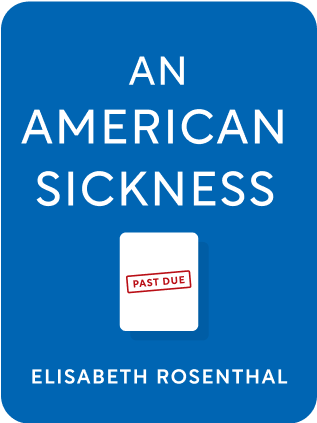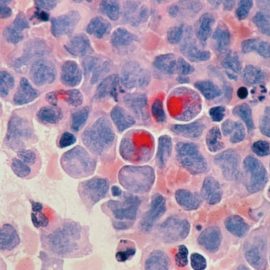

This article is an excerpt from the Shortform book guide to "An American Sickness" by Elisabeth Rosenthal. Shortform has the world's best summaries and analyses of books you should be reading.
Like this article? Sign up for a free trial here .
What is a co-pay assistance program? What happens if a patient can’t afford to pay for their co-pay?
Co-pay assistance programs provide financial help for under-insured patients with life-threatening medical conditions. When patients can’t afford to pay their co-pays, they can still get the required treatment through a non-profit program.
Here is how co-pay assistance programs work.
Co-Pay Assistance Explained
What if patients can’t afford the co-pays on their drugs? Pharma companies have a scheme for that.
The pharma company sets up a nonprofit that helps patients pay co-pays. This is net better for the pharma company anyway—the insurer is paying most of the drug’s cost.
For example, say a drug costs $5000, and the patient’s co-pay is $1250. Pharma covers the co-pay, and it gets $3750 for a sale that wouldn’t otherwise have happened. The drug price remains high, insurance reimburses, and pharma gets marginal sales.
This strategy neutralizes the advantage of cheaper drugs for the consumer—without pricing pressure, consumers pick the drug they like most, or the most expensive one.
The patient’s copay might even be higher with a cheaper competitor that doesn’t have this co-pay assistance program. For the example above, say a competitor has a $1000 drug that costs the patient $200 in co-pay. The patient would obviously rather choose the $0 copay drug, even if it costs the medical system far more.
Medicare forbids co-pay offers directly from pharma firm foundations. However, private insurers aren’t barred from this, and they face competitive pressure to allow it—if one insurer didn’t allow it, patients would quickly leave for a competing insurer. Unfortunately, this sets up a crisis when the patient goes on Medicare and can no longer afford drugs.
Best of all—this co-pay assistance is tax-deductible for pharma companies.
Pharmacy Benefit Managers (PBMs)
Pharmacy benefit managers are hired by insurers and employers to negotiate drug purchases with pharmacies. Per antitrust law, insurers cannot compare prices they pay for medicine, but PBMs can.
The largest PBMs are Express Scripts, CVS Caremark, and OptumRx.
PBMs pocket a percentage of discounts they negotiate. Thus they put drugs that net them the best deals, not necessarily the drugs that are most in demand.
Furthermore, they may treat individual drugs as strategic pieces in a chess game. They can drop certain drugs from coverage to pressure pharma companies for better deals, with patients as collateral damage as they scramble to find alternatives.
Medicare Part D
Medicare Part D was started in 2006 as a way to make drugs more affordable for patients. Before this, Medicare seniors had to pay out of pocket.
Part D had a unique co-pay structure:
- The first $320 was a deductible, fully paid by the patient.
- The next $2,960 required a 25% copay.
- The next $1,740 required a 100% copay. This was known as the “donut hole” and was intended to make patients think twice about taking expensive medication.
- After this, the copay reduces to 5%.
The unintended effect of Part D was that seniors now had guaranteed drug coverage and ample budgets to spend on medicines. Pharma companies quickly pushed up prices for essential medicines, sometimes to multiples what they used to cost.
As economics would predict, every incentive and opportunity is exploited by market participants.
The Factor VIII Story
Factor VIII is a treatment for the bleeding disorder hemophilia. Here’s a story about how this old treatment has become progressively more expensive over time.
- In the 1960s, Factor VIII was made available and priced at $3,000. This price was shocking at the time. This was made from donated blood.
- In the 1980s, HIV and hepatitis C infected the blood supply, requiring new blood treatment processes to kill viruses in blood. This nearly tripled prices, rising to 40 cents per unit.
- In the 1990s, the gene for Factor VIII was isolated, allowing for Factor VIII to be generated in the lab without needing human blood. Despite being cheaper to produce, these were priced even higher than the older blood-derived Factor VIII at $1/unit. In response, manufacturers of blood-derived Factor VIII didn’t compete by lowering prices—emboldened by the higher prices, they raised prices to 60 cents/unit.
- Now that Factor VIII was no longer in short supply, patients could take it three times a week rather than saving it for an emergency. The total cost of treatment now cost $300,000 to $600,000 per year.
- An industry of home-delivered factor VIII began. Patients started effectively getting kickbacks from manufacturers for switching to them. Even though kickbacks are illegal, manufacturers arranged a workaround—they would sell home care company units of Factor VIII, then home care companies would sign patients with free perks and rewards.
- Finally, if the patient can’t afford Factor VIII, the manufacturer has a co-pay assistance plan, so the patient doesn’t pay out of pocket. Instead, the expenses are pushed to the insurer, and ultimately to the employer.

———End of Preview———
Like what you just read? Read the rest of the world's best book summary and analysis of Elisabeth Rosenthal's "An American Sickness" at Shortform .
Here's what you'll find in our full An American Sickness summary :
- How U.S. healthcare got to the state it's in today
- Why it's so difficult to make any changes to the healthcare system
- What you can do to lower your personal healthcare costs






